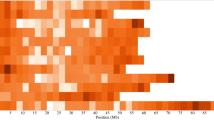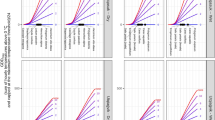Abstract
AMONG the consequences of the recent Russian expeditions to South America was a revival of interest in the origin of the European potato. There are two centres from which potatoes might have come: the Chiloe region of South Chile, and the Andes at tropical latitudes. Bukasov1 and his co-workers chose Chile, partly for morphological reasons which by themselves were insufficient, but primarily because the Chilean potatoes are adapted to long summer days, whereas the Andean potatoes are suited to the approximately twelve-hour day of the tropics and, as a rule, fare badly if grown in Europe during summer. But Salaman2 pointed out that at the time when potatoes were known in Europe the Spanish hold on Chile was tenuous., and Magellan had not yet navigated the Straits ; it was unlikely either that the Spaniards could have acquired the potato in Chile or, if they had, that they could have brought it safely over the slow route home. On grounds of probability, it was much more likely that they took potatoes from Colombia, Ecuador, Bolivia or Peru., which had been conquered half a century earlier and which were in constant touch with Spain. On the question of photoperiodism, Hawkes! suggests in support of this hypothesis first, that the first European potatoes may have been long-day or day-neutral types, since these occur occasionally among Andean varieties ; secondly, that if they were short-day types, their character might have been changed by breeding, as Salaman2 suggested earlier ; and, thirdly, that if they were short-day types, they might not have done too badly at the fairly low latitudes of southern Europe, to which they first came.
This is a preview of subscription content, access via your institution
Access options
Subscribe to this journal
Receive 51 print issues and online access
$199.00 per year
only $3.90 per issue
Buy this article
- Purchase on Springer Link
- Instant access to full article PDF
Prices may be subject to local taxes which are calculated during checkout
Similar content being viewed by others
References
Bukasov, S. M., Suppl. 58 Pull. Appl. Bot. Leningrad, pp. 192 (1933), quoted by Salaman, Hawkes and others.
Salaman, R. N., J. Boy. Bori. Soc, 62, 61, 112, 153, 253 (1937).
Hawkes, J. G., "Potato Collecting Expeditions in Mexico and South America". Imp. Bur. of Plant Breeding and Genetics, 142 (1944).
Clusius, C., "Rariorum plantarum Historia" (Antwerp, 1601).
Quoted by Hackbarth, J. Zumul;chter, 7, 95 (1935).
Salaman, R. N., New Biol, 1, 9 (1945).
Casalis, E., "My Life in Basutoland". English trans, by Brierley. Religious Tract Soc. (London, 1889).
For example, see Loudon, J. C., "Encyclopaedia of Gardening", p. 829 (London, 1835).
Tincker, M. A. H., Ann. Bot, 39, 721 (1925).
Author information
Authors and Affiliations
Rights and permissions
About this article
Cite this article
VAN DER PLANK, J. ORIGIN OF THE FIRST EUROPEAN POTATOES AND THEIR REACTION TO LENGTH OF DAY. Nature 157, 503–505 (1946). https://doi.org/10.1038/157503a0
Issue Date:
DOI: https://doi.org/10.1038/157503a0
This article is cited by
-
Challenges and Way-forward in Selection of Superior Parents, Crosses and Clones in Potato Breeding
Potato Research (2015)
-
Heterosis Breeding in Potato
Agricultural Research (2014)
-
Progeny mean, heterosis and heterobeltiosis inSolanum tuberosum x tuberosum andS. tuberosum x andigena families under a short day sub-tropic environment
Potato Research (2000)
-
The evolution of cultivated potatoes
Economic Botany (1990)
-
Studies on genetic divergence in potato
Euphytica (1978)
Comments
By submitting a comment you agree to abide by our Terms and Community Guidelines. If you find something abusive or that does not comply with our terms or guidelines please flag it as inappropriate.



